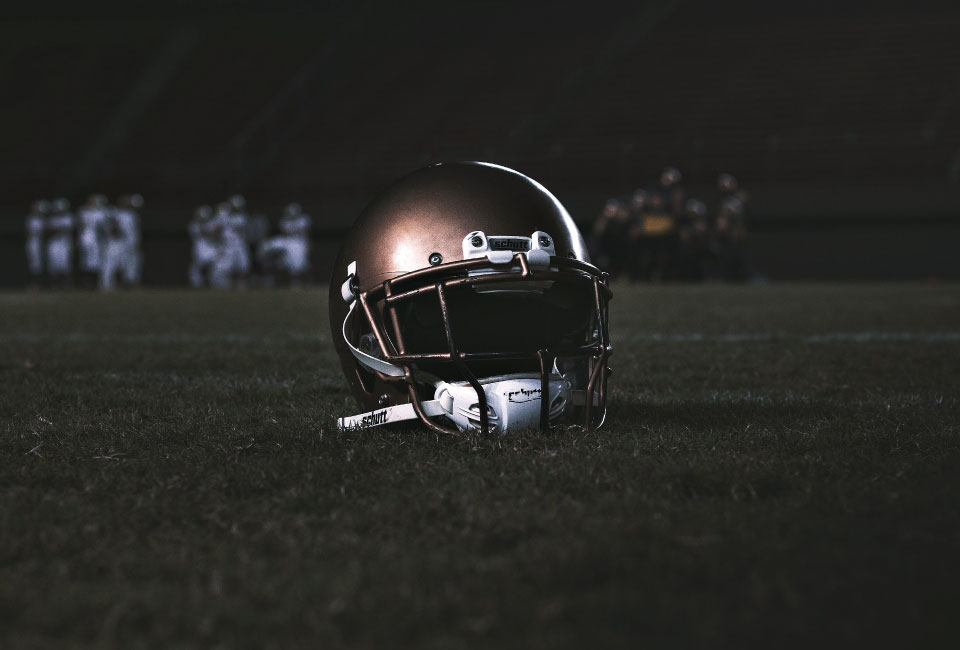We'd first like to congratulate the Kansas City Chiefs on winning Super Bowl LVIII! Now that the season has ended, let’s look back at 2023 and the changes being made to improve player safety.
The 2023 season started with a bang, or in the case of Aaron Rodgers, a pop. Shortly after taking the artificial turf field, the star quarterback tore his Achilles tendon, and, thanks to modern technology, the entire nation has been able to view in high definition the exact moment this season-ending injury occurred.
Many sports commentators believe this injury could have been prevented, or at least lessened, had the NFL (National Football League) used available technology to understand the impact of turf, and modify the players' equipment where necessary.
As technology evolves, both NFL players and fans are pushing the league to improve player safety through the integration of modern tools. However, this modernization request comes with a major caveat—the spirit of the game must not be changed. This balancing act can best be seen in two viral moments of the 2023 season—Aaron Rodgers' injury and Patrick Mahomes’ shattered helmet.
Artificial turf vs. real grass
The pop that was heard (and seen) around the nation, Aaron Rodgers' torn Achilles tendon, brought the artificial turf vs. real grass debate to the forefront of the 2023 NFL season. The NFL Players Association strongly believes that artificial turf is more dangerous to play on than grass, but the 2023 data on the impact of turf vs. grass on lower-body injury is inconclusive.
A joint committee composed of representatives from the NFL and the NFL Players Association analyzed lower-body injuries during the 2023 season and found that the field type did not have a significant impact on the likelihood of experiencing a lower-body injury.
However, as pointed out by the Players Association, definitive conclusions cannot be drawn from a study based only on one year of data. Especially when data has shown that over the last 11 years, non-contact lower-body injuries were more likely to occur on artificial turf fields.
The NFL, while maintaining a more neutral position on the turf vs. grass debate than the Players Association, has acknowledged that more needs to be done to understand how differences in field material influence aspects of the game. In November, the league announced the HealthTECH Challenge I, which aims to accelerate innovation aimed at increasing the consistency of playing surfaces and improving player safety.
Due to financial and logistical constraints, the NFL is not going to ditch artificial turf anytime soon. However, the league has signaled its commitment to finding innovative ways to make playing on artificial turf safer for the players. In the meantime, they are ensuring player safety through other innovations such as the Digital Athlete. Developed in partnership with AWS, the Digital Athlete uses artificial intelligence and machine learning to identify the needs of each player to enhance recovery and game performance.
Concussion prevention
The Miami Dolphins vs. Kansas City Chiefs playoff wild card game has become known for more than just the historic frigid temperatures. During the game, Chiefs quarterback Patrick Mahomes’ helmet experienced a catastrophic failure that left pieces of his helmet on the field. While the helmet experienced a game-ending hit, Mahomes did not. This indicates that although the helmet broke, it successfully did the job it was designed to do—prevent traumatic brain injury.
The NFL has made significant advancements to reduce the number of concussions, including the development of position-specific helmets and banning helmets that perform poorly during testing. The NFL also utilizes an AI-powered visual system that measures the number of head impacts per player during each game. Although the system does not measure the magnitude of the hit, it does provide each team with detailed information about the number of head impacts individual players sustained during a game.
In the name of concussion prevention, the NFL also implemented a controversial rule change in the 2023 season that resulted in many fans arguing that the NFL has gone too far. The temporary rule change has been referred to as the fair catch rule, which states that if a player signals for a fair catch anywhere inside of their team’s 25-yard line at kickoff, the ball would automatically be placed at the 25 to begin the possession.
Fans argue that this rule change takes away from the excitement of the game by decreasing the likelihood of kicks being returned. However, the rule change resulted in a 60% decrease in concussions during kickoff, leading the NFL to ask: What is an acceptable risk to the players?
Fans and players will get an answer to this question by the 2024 season, as the fair catch rule was a temporary one-year rule change. To answer this question, the NFL will rely heavily on the data collected over the last season.
Our approach
Player safety is just one aspect of sports that can be improved using technology. At Endava, we’ve seen sports and entertainment clients use AI and ML to optimize their operations, make more informed decisions and build better experiences for fans.
Interested in learning more about how AI or ML could transform your business? Get in touch with our sporting industry experts here.
